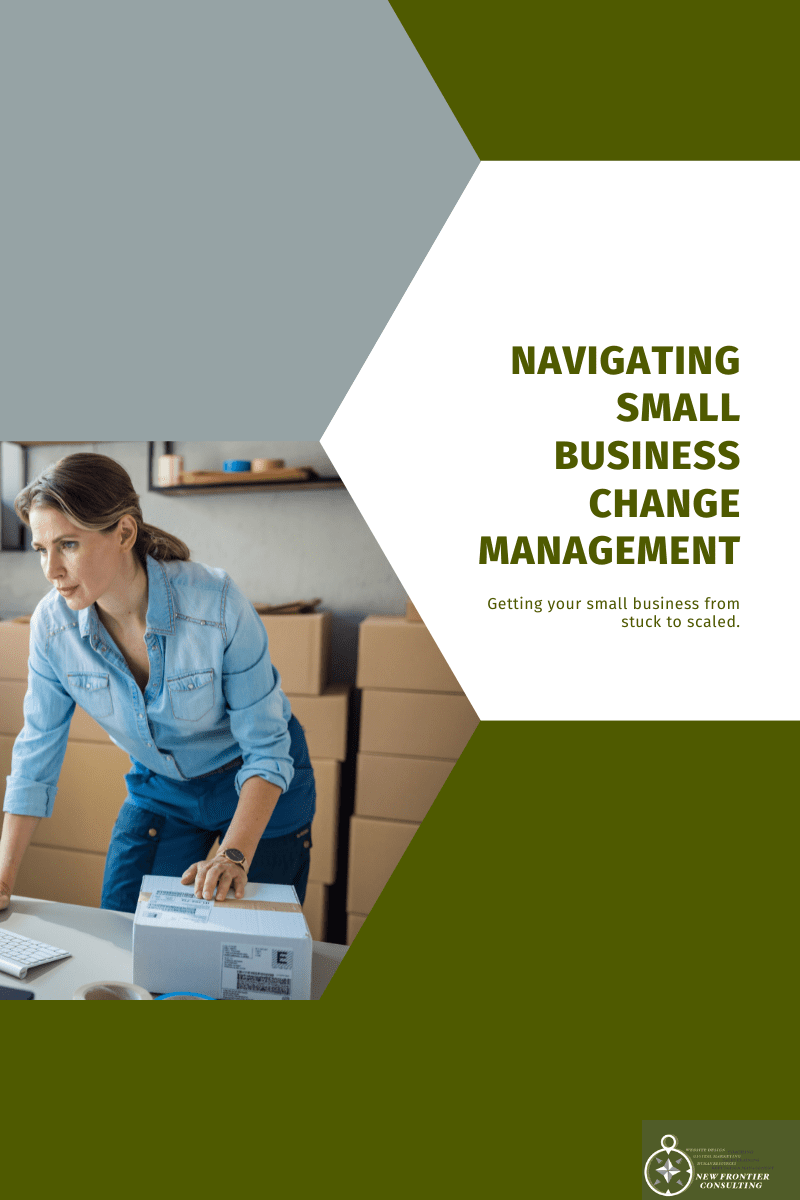Change is a constant in the world of business, and small business owners are no strangers to its effects. In fact, they may feel it more than anyone! Effective change management techniques are vital to get your small business from stuck to scaled.
So why does navigating these change often leave entrepreneurs feeling frustrated and uncertain about the next steps for their businesses? Because balancing both the business and the people can be daunting and without an effective, proven strategy, knowing the next step can be difficult.
Understanding how change impacts your business and your team is crucial for driving sustainable growth. In this blog post, we’ll explore the concept of change management and how small business owners can successfully navigate the various stages of change. By delving into the S-curve response to change, we’ll uncover valuable insights into the emotional journey employees undergo and identify strategies for overcoming common challenges. Whether you’re facing a major organizational restructuring, implementing new technologies, or simply striving to improve your business processes, mastering the art of change management is key to unlocking your business’s full potential.

Understanding the S-Curve Response to Change:
Change is inevitable in any business, but how you navigate it can make all the difference. The first key is understanding the two parts of change management within your business. The first part is the processes that need to be changed. The second part are the employee responses. These emotional responses to the adjustment, or “new normal,” are just as difficult (and vital!) to manage well.
These are the most common emotional stages we see employees go through when dealing with the effects of change management.
The Initial Stages of “fear”
Shock: The initial reaction to change is often shock or disbelief. Employees may feel surprised or caught off guard by the news, especially if they weren’t expecting it. This phase is characterized by a sense of uncertainty and anxiety about what the change will mean for them personally and professionally.
Denial: In this phase, employees may deny or downplay the significance of the change. They may resist accepting the reality of the situation and cling to familiar routines or ways of thinking. Denial can manifest as skepticism, avoidance, or even outright refusal to acknowledge the need for change.
Anger/Frustration: As the reality of the change sets in, employees may experience feelings of anger or frustration. They may feel upset about the disruption to their work or resentful towards those responsible for implementing the change. Anger can manifest as resistance, conflict, or passive-aggressive behavior in the workplace.
Depression: In this phase, employees may feel a sense of sadness or loss as they mourn the perceived loss of the familiar. They may struggle to cope with the changes and experience feelings of helplessness or hopelessness about the future. Depression can manifest as withdrawal, apathy, or decreased motivation at work.
Breakthrough
Engagement: Gradually, employees begin to accept the reality of the change and engage more actively in the process. They may start to see the benefits of the change and become more willing to participate in implementing it. Engagement can manifest as curiosity, openness to new ideas, and a willingness to collaborate with others. This is a critical step in critical. Employees have started to break through fear and accept the new normal. Do not let old habits take over!
Decision: In this phase, employees start to make decisions about how to adapt to the change. They may actively seek out information, resources, or support to help them navigate the transition. Decision-making can manifest as taking ownership of the change, setting goals, and developing action plans for moving forward.
Integration: As employees become more comfortable with the change, they begin to integrate it into their daily routines and workflows. They may develop new skills, habits, or ways of working that align with the change. Integration can manifest as increased confidence, productivity, and satisfaction with the new way of doing things.
Reinforcement of New Normal: Finally, employees reach a point where the change becomes the new normal. They no longer see it as something temporary or disruptive but rather as an integral part of how they operate. Reinforcement can manifest as ongoing support, recognition, and celebration of achievements related to the change.
Supporting Your Team
Your role as the business owner extends beyond managing the logistical aspects of change. It will also involve providing support and guidance to your team members as they navigate the emotional journey that accompanies change. Here are some strategies to help your employees move through the various stages of change management with confidence:
Open Communication: Foster a culture of open communication where employees feel comfortable expressing their thoughts, concerns, and emotions about the change. Encourage dialogue through team meetings, one-on-one discussions, and anonymous feedback channels. Be transparent about the reasons behind the change and its potential impact on the business and individuals.
Empathy and Understanding: Recognize that change can evoke a range of emotions, and validate your employees’ feelings throughout the process. Demonstrate empathy by actively listening to their concerns, acknowledging their experiences, and offering support and reassurance. Be patient and understanding as they navigate their individual responses to the change.
Provide Resources and Support: Equip your team with the resources and support they need to adapt to the change effectively. Offer training, workshops, or coaching sessions to help build their skills and confidence in implementing new processes or technologies. Assign mentors or peer support networks to provide guidance and encouragement along the way.
Lead by Example: As a business owner, your attitude and behavior set the tone for how others perceive and respond to change. Lead by example by demonstrating a positive and proactive approach to change management. Embrace the change openly, communicate its benefits, and actively participate in the transition process alongside your team.
Celebrate Progress and Milestones: Recognize and celebrate the achievements and milestones reached throughout the change process. Acknowledge the efforts of individuals and teams, and highlight successes to inspire motivation and momentum. Celebrating progress reinforces a sense of accomplishment and encourages continued engagement and commitment to the change initiative.
Provide Stability and Reassurance: Amidst the uncertainties of change, provide stability and reassurance to your team members. Clearly communicate the timeline, expectations, and outcomes of the change, and provide regular updates to keep everyone informed and aligned. Reassure employees of their value to the organization and emphasize your commitment to supporting their growth and development.
By taking a proactive and supportive approach to managing the emotional stages of change, you can help your employees navigate the transition with resilience and confidence. Your leadership and empathy will not only strengthen team morale but also contribute to the overall success of the change initiative.
Take the Next Step
We understand that managing change while running a business can be overwhelming. That’s why we’re here to support you every step of the way. Our team works in your business, so you can work on it. Whether it’s helping you streamline processes, improve employee engagement, or optimize your digital presence, we’ve got you covered.
When you are ready to unlock your business’s full potential, schedule an appointment with one of our specialists today and discover how our unique approach to change management can help you scale your business with confidence.
Change management doesn’t have to be a daunting task. With the right guidance and support, you can navigate change with confidence and unlock new opportunities for growth. We’re committed to helping small business owners like you thrive in today’s ever-changing market.
